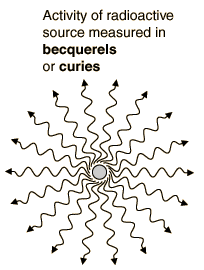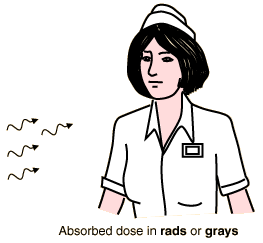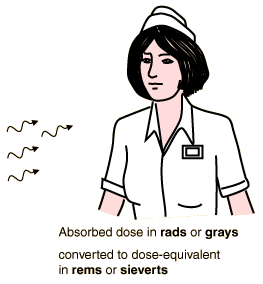Radiation Risk
Because the energies of the particles emitted during radioactive processes are extremely high, nearly all such particles fall in the class of ionizing radiation.

| Activity of source | Absorbed dose | Biologically effective dose | Intensity | |
| Old standard unit | ||||
| SI unit | ... |
Radiation exposure examples
| HyperPhysics***** Nuclear | R Nave |




